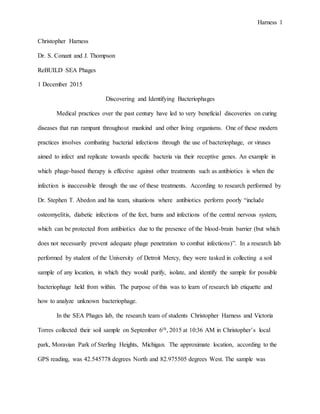The document summarizes research conducted by students Christopher Harness and Victoria Torres to discover and identify bacteriophages from a soil sample. Through a process of enrichment, purification, and isolation, they identified a phage they named "Phernando" that is similar to members of the Siphoviridae family. Electron microscopy analysis revealed its tail and head structure. The students gained experience in scientific research techniques like restriction enzyme analysis, gel electrophoresis, and calculating phage concentrations. Their work provided hands-on learning about identifying unknown bacteriophages through established lab procedures.




